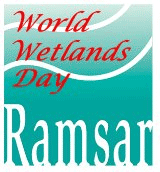
| Add additional observers | |||
|---|---|---|---|
| Observer Number | Name | Options | |
| Current data | |||||
|---|---|---|---|---|---|
| Ref # | Species | Count | Breeding Pairs | Breeding indicator | |
| 4 | Grebe, Great Crested (Podiceps cristatus) | 2 | 0 | ||
| 6 | Grebe, Little (Tachybaptus ruficollis) | 52 | 0 | ||
| 47 | Cormorant, White-breasted (Phalacrocorax lucidus) | 15 | 0 | ||
| 50 | Cormorant, Reed (Microcarbo africanus) | 45 | 0 | ||
| 52 | Darter, African (Anhinga rufa) | 15 | 0 | ||
| 54 | Heron, Grey (Ardea cinerea) | 4 | 0 | ||
| 55 | Heron, Black-headed (Ardea melanocephala) | 1 | 0 | ||
| 59 | Egret, Little (Egretta garzetta) | 1 | 0 | ||
| 81 | Ibis, African Sacred (Threskiornis aethiopicus) | 1 | 0 | ||
| 84 | Ibis, Hadada (Bostrychia hagedash) | 25 | 0 | ||
| 85 | Spoonbill, African (Platalea alba) | 1 | 0 | ||
| 88 | Goose, Spur-winged (Plectropterus gambensis) | 1 | 0 | ||
| 89 | Goose, Egyptian (Alopochen aegyptiaca) | 19 | 0 | ||
| 96 | Duck, Yellow-billed (Anas undulata) | 26 | 0 | ||
| 97 | Teal, Red-billed (Anas erythrorhyncha) | 9 | 0 | ||
| 149 | Fish Eagle, African (Haliaeetus vocifer) | 4 | 0 | Probably Breeding | |
| 167 | Harrier, African Marsh (Circus ranivorus) | 1 | 0 | ||
| 208 | Swamphen, African (Porphyrio madagascariensis) | 1 | 0 | ||
| 210 | Moorhen, Common (Gallinula chloropus) | 2 | 0 | ||
| 212 | Coot, Red-knobbed (Fulica cristata) | 2071 | 0 | ||
| 245 | Lapwing, Blacksmith (Vanellus armatus) | 6 | 0 | ||
| 270 | Stilt, Black-winged (Himantopus himantopus) | 5 | 0 | ||
| 287 | Gull, Kelp (Larus dominicanus) | 9 | 0 | ||
| 289 | Gull, Hartlaub's (Chroicocephalus hartlaubii) | 6 | 0 | ||
| 290 | Tern, Caspian (Hydroprogne caspia) | 4 | 0 | ||
| 394 | Kingfisher, Pied (Ceryle rudis) | 6 | 0 | ||
| 395 | Kingfisher, Giant (Megaceryle maxima) | 1 | 0 | ||
| 686 | Wagtail, Cape (Motacilla capensis) | 9 | 0 | ||




